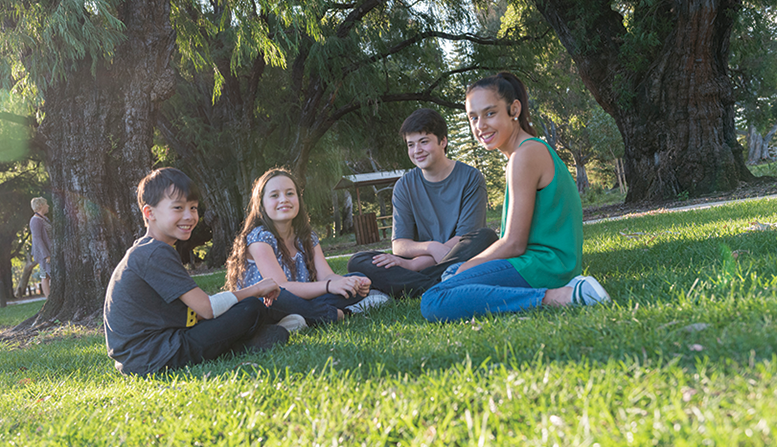Flat out trying hard to keep up with the ever-changing threats from cyberbullying, The Kids Research Institute Australia counts itself fortunate to have youth on its side.
Professor Donna Cross’ research team relies on an army of young advisors – in particular 70 14-year-old Cyber Savvy ambassadors who develop concepts for teen-friendly apps – as well as a research team that includes those still in their early 20s.
On top of this, another 30,000 Australian students were involved in the 11 anti-bullying trials that have informed the team’s work, with many providing feedback that led to new directions in research.
“This is such a new area of investigation in terms of developing new knowledge – unlike areas such as road safety, where our research can only value-add to work that has been done in the past. With cyberbullying, it is virgin territory in terms of knowledge and understanding,” Professor Cross said.
“The really exciting feature for us is the opportunity to work with young people to develop these resources, because if you’re older than about 14 years of age you’re getting too old to have a deep understanding of what is the best way to intervene.”
It was an incident over a decade ago that convinced Professor Cross of the importance of allowing young people to direct her research.
“I remember back in 2006, when we were running a secondary bullying prevention trial called Supportive Schools, a few students mentioned for the first time being bullied through their mobile phone,” she said.
“Fortunately, I was working with a young team of early career researchers who were quick to recognise the importance of this finding. And they had the skills and understanding of mobile phones that we older researchers did not.
“So we then began talking to more young people and asked ‘Can you tell us more about this mobile phone bullying? What does it look like? How are you experiencing it?’
“And we ran three large formative studies talking to young people, teachers and parents to try and understand what each of those groups’ perspective was on that behaviour. At the same time, we were asking their advice about what they needed to support them in this environment. “Our follow-up studies spent time designing and trialling models to try and keep up with the rate of technology change.
“Just when we thought we had it nailed, social media became really interesting to young people and so their behaviours switched from texting and blog-based delivery of content to quite different and even faster interaction.
“So we have needed to make sure we have a constant reference group of young ambassadors on-hand, who give us advice about the latest trends online and enable us to be able to adapt our resources or develop new ones.”
Armed with pens and butchers paper, in just 12 hours these teens came up with the concept for the Institute’s highly successful Image Up app. The app can post images to sites like Facebook and Instagram, but stores a ‘sent’ photo for 10 seconds while in-the-moment humorous and education-based messages are delivered, encouraging the young person to pause and reconsider sending inappropriate, explicit or illegal images.

